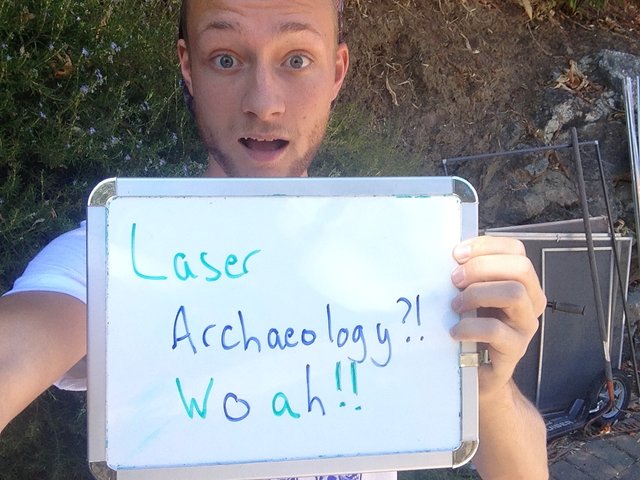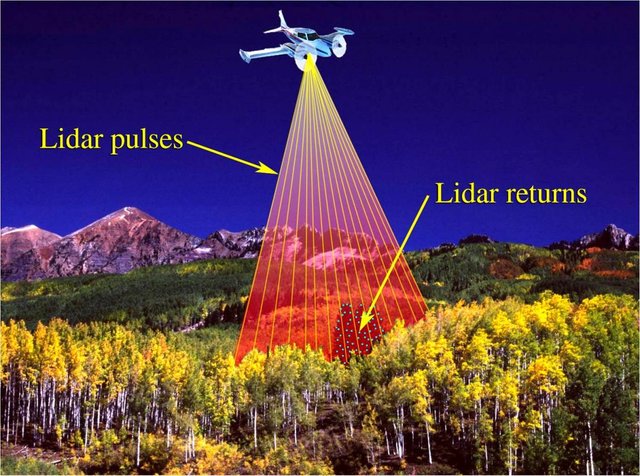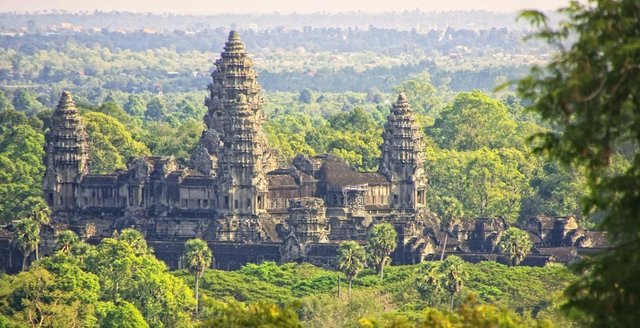
To many people, history is a static thing. They learn about the history of their country, social movements, and their world as things etched in stone, history as a standing monument etched in stone. Well, stone erodes. Even stone can be changed by time and the elements and human will. This applies to history as well. The human race has built its conception of the past based on the biases of the victors as well as the evidence available at the time. Well, as technology, society, and knowledge grow, history consequently evolves. The discovery and application of ladar, essentially a form of radar utilizing laser technology, is one of the tools currently revolutionizing our understanding of history.

How Lidar Functions - (Source)
Littered throughout the jungles and forests and remote and barren places of the plant, evidence of past worlds and civilizations remain. One such place is in the jungles of Cambodia, in the city known in past centuries as Angkor. At the center of this ancient city lies Angkor Wat, the largest religious monument in the world, and one of the most frequented tourist sites in the world. You would think that such a high profile place would have had the jungles surrounding it scoured for decades by archaeologists and all things of interest or import found. Well, while archaeologists certainly tried, limitations of equipment and manpower meant that only so much could be done. That has changed entirely since the introduction of ladar technology to the project four years ago.

An international team of researchers known as the Cambodian Archaeological Lidar Initiative has now implemented the use of lidar to map out the jungle surrounding Angkor Wat. Here is a great video from the Smithsonian Institute explaining how it works:
Essentially, lidar allows the research team to find potential ruins or artifacts that they otherwise would never have had the manpower to fully explore. This has opened up a multitude of new avenues of opportunity for exploration, and could lead to a fundamental reevaluation of the way the Khmer Empire (the Empire under which Angkor and Angkor Wat were built) came to be, functioned, how it's people lived, and ultimately why it disappeared.
But the importance of this new application of technology goes beyond a simple re-evaluation of the way of life of past people. It hands truth and the power to personally decide what did or did not happen in the past back to the private individual. The saying "history is written by the victors" has long been true. As Adolf Hitler once remarked, referring to the widely forgotten genocide of the Armenians by the Ottoman Empire, "who, after all, speaks today of the annihilation of the Armenians?"

This image was too good not to include - (Source)
Perhaps with the implementation of this new technology throughout the world, we will better be able to find and preserve the objects and places that tell the story of our past. As Mr. Shaun Mackey, a leading scientist for the project, puts it "
When myth becomes such entrenched history, archaeology is a way of challenging the written record, particularly because history is often written by the powerful who give voice to their own agendas,” he said. “But the material remains.”
Nice article. Upvoted
Downvoting a post can decrease pending rewards and make it less visible. Common reasons:
Submit
hii, welcome
nice
can check and my post https://steemit.com/steemit/@bithost99/yahoo-confirmed-that-500-million-accounts-have-been-hacked-the-3-things-you-must-do-users-now
Downvoting a post can decrease pending rewards and make it less visible. Common reasons:
Submit
I wonder how many ancient cities they would find in America with this technology.
Downvoting a post can decrease pending rewards and make it less visible. Common reasons:
Submit
More than they would like us to know about, I'll bet.
Downvoting a post can decrease pending rewards and make it less visible. Common reasons:
Submit